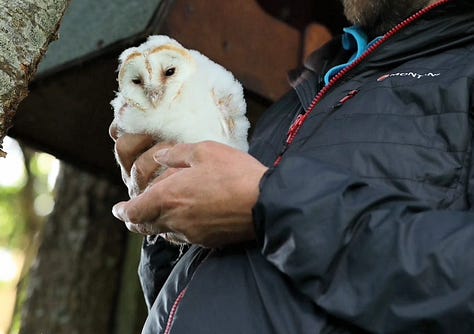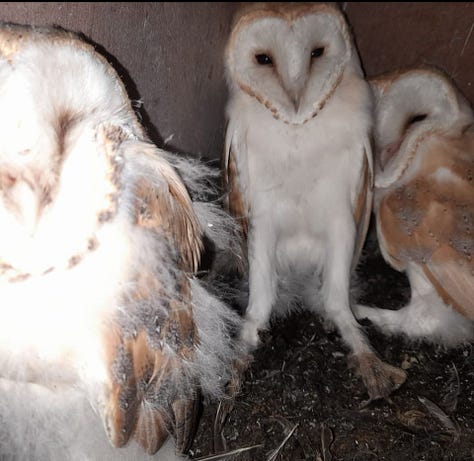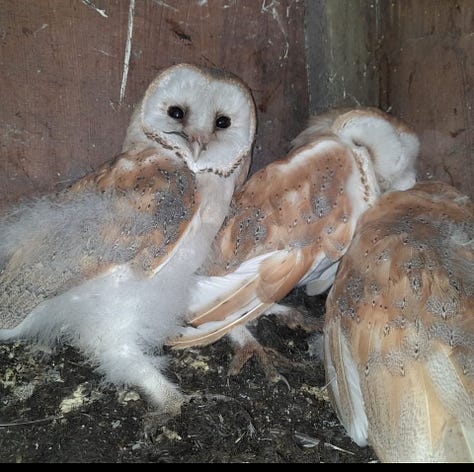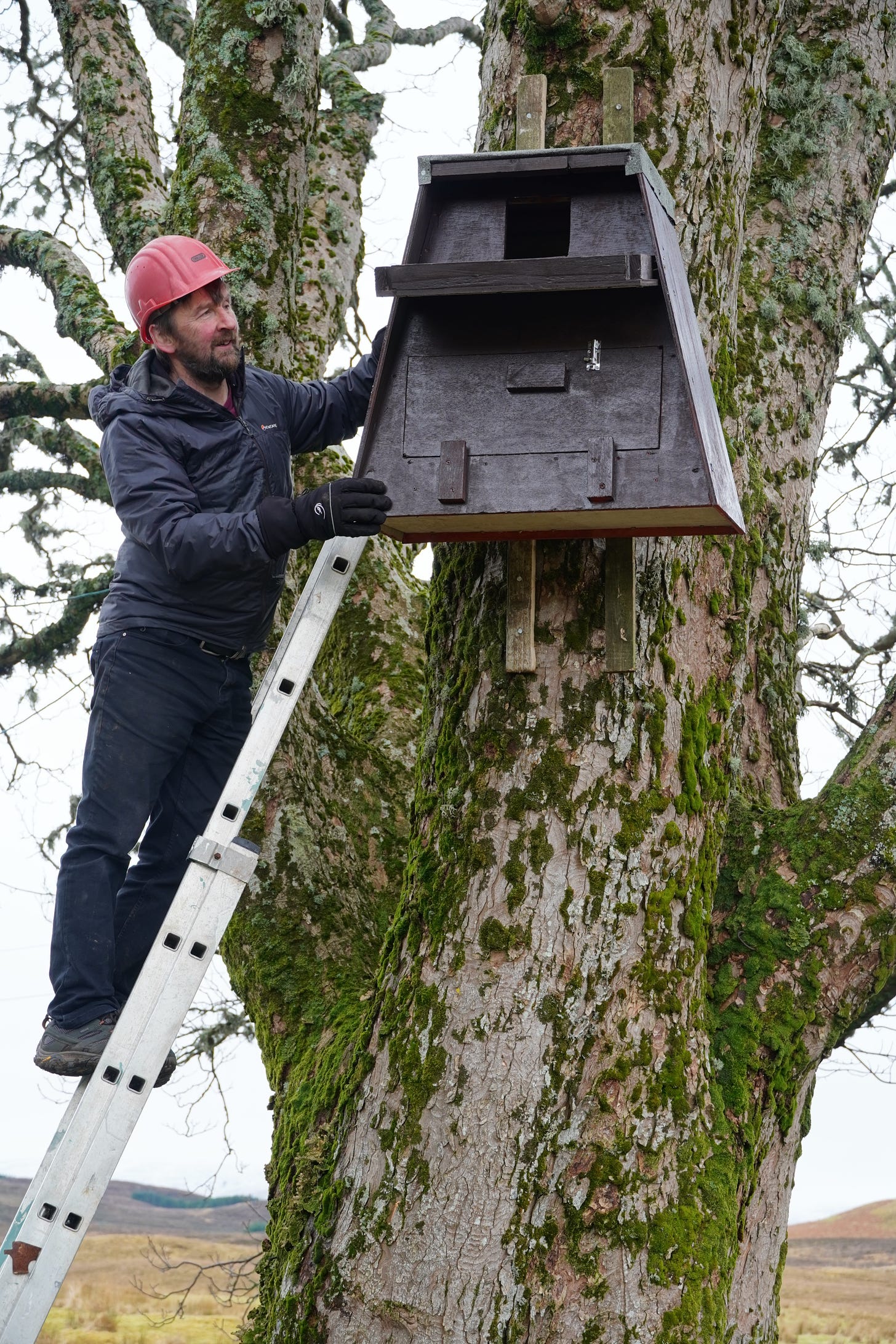
It was still dark. The broken winter landscape was devoid of colour. The smell of pre-dawn hung in the unnaturally warm air. The dogs limbo-danced their way under the croft gate. The Hebridean sheep heard the rattle of the sugar beet pellets in my bucket and had started moving forward long before I could see their black fleeces in the murky gloom. I was not fully awake and was only vaguely aware of the distant lights of the trawlers in the Minch; the squelch of mud under my wellies and the quiet “tssp, tssp” of a lone Redwing flying far overhead, searching for any remaining rowan berries.
Head down in a dream-like trance, I nearly missed it. For out of nowhere it rose from the long grass as soft as cotton grass – it was the whitest thing you could ever imagine. It beat a mysterious and erratic path, only metres above the earth, passed the rusty broken tractor next door, across the croft ditches and the flooded marsh, passed ancient twisting walls left over from the iron-age, over lazy beds long abandoned and finally disappeared beyond the rubble of stones that was once the magnificent Clachtoll broch.
The ghostly, delicate beauty of a Barn Owl in the pre-dawn blackness is enough to make anyone’s heart miss a beat. And there was not a sound- as if someone had pressed the mute button on the television in my head.
The silence of flight
Barn Owls fly silently. The soft wing feathers make no sound as they beat. The bird flies 3m above the ground, all the while listening to hear the slightest sound of a rodent prey hidden in the deep tangle of grass and rushes. Their amazing heart-shaped face collects the faintest sound in the same way as a human ear. It seems the burnished golden wings of this stunning bird has been spreading northwards in recent years. Climate change and in particular the milder winters have allowed the Barn Owl, to expand its breeding range and colonise new parts of the Highlands.
Barn Owls feed exclusively on small rodents. A single bird will need to eat over 5,000 mice, voles and shrews over the year. On a frozen landscape or one covered in thick snow it can be virtually impossible to find enough food. As temperatures drop, small mammals become less active. Less active prey make a lot less noise and are therefore much harder for Barn Owls to find and catch (look out for our blog post on owl pellet disections which will be published soon)
Barn Owls are poorly insulated and need extra energy (food) during cold weather to make up for an increased loss of body heat. In winter then, food is generally harder to find at a time when Barn Owls need it most. Mortality is especially high in young birds dispersing in their first winter However, Barn Owls have some extraordinary specially adapted characteristics to help them hunt for food at night, such as incredibly sensitive hearing and the ability to see movement with very little light. So, look out for this mysterious ghost-like bird this winter. You are actually more likely to hear it than see it.
Conserving Barn Owls
As the Senior Ranger based in Assynt, I've had the privilege of witnessing many wonders of nature, but the barn owl project holds a special place in my heart. A remarkable volunteer, Steve Langford, has dedicated his skills to craft several bird boxes, including one tailored for barn owls. I undertook the task of carefully placing these sanctuaries across parts of Sutherland landscape. Our hope was simple yet profound – to offer a safe haven for our avian companions.
To our delight, the barn owl boxes were embraced by their intended residents. I had the unique opportunity to observe and care for these majestic birds. With the necessary permissions (I hold a bird handling license), I closely monitored their progress, and I'm thrilled to share that we had a family of 4 or 5 barn owl fledglings taking flight into the world.
These moments, captured in the photographs below, are stories of life, survival, and the beauty of nature's cycles. It's a real testament to what we can achieve when we come together for the greater good of our natural world.
This experience is also huge reminder of the delicate balance we share with the creatures around us and the impact of our collective efforts in conservation.



As I share these photos and reflections, I'm filled with gratitude for the community of nature lovers. Here's to many more such success stories!
Nesting boxes
If you want to help our Barn Owls and have a suitable deserted out-building, or sheltered large tree think about putting up a nest box, or if you have some land, think about leaving some long grass that will shelter those field voles which are important food source.
If you would like to help us by hosting a box - do please get in touch - we can help make this happen!
Andy Summers, North Highland's Senior Ranger for High Life Highland, is a dedicated naturalist with a deep understanding of the region's diverse ecosystems. His extensive experience in wildlife conservation and passion for preserving North Highland's pristine landscapes make him a vital asset. Andy's work encompasses wildlife observation, environmental education, and passing on a greater appreciation for the area's unique flora and fauna. His commitment to conserving North Highland's natural heritage is evident in his expertise and unwavering dedication.





Apologies - we had a typo in the link to email to host a barn owl box. This has been corrected now. Hope those who might have tried to contact Andy try again!